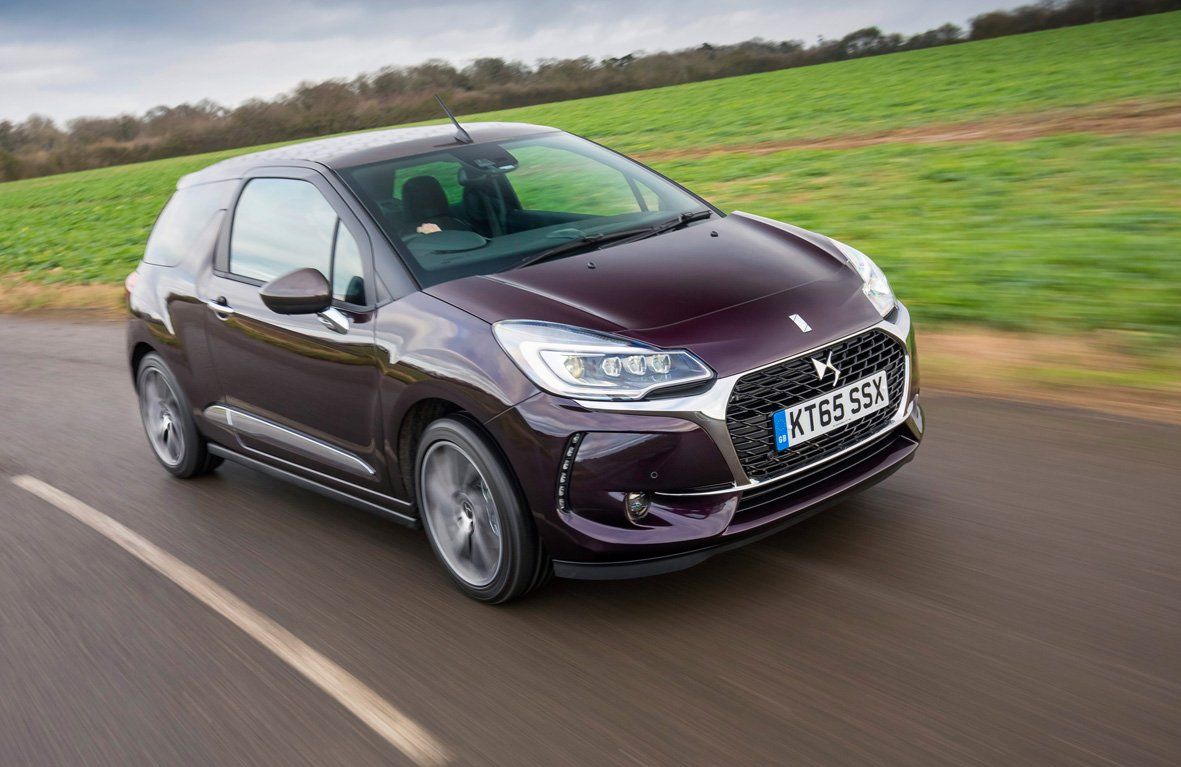DS 3 Cabrio (2013-2018) Review
Written by Andrew Brady
Quick overview
Pros
- Avant-garde styling is ageing like a fine wine
- Premium cabin that’s loaded with neat touches and fine materials
- Roof opens in 16 seconds at motorway speeds
Cons
- Not a proper convertible
- Hardly the most practical of cars
- Later DS versions are just rebadged Citroens
Overall verdict on the DS 3 Cabrio
"In this DS 3 Cabrio review we are taking a look at a convertible for buyers who aren't sure they want a convertible. Because the DS3 Cabrio essentially has a full-length sunroof rather than a roof that disappears, but in many ways that is a positive rather than a negative - you can have all of the sunshine and most of the air without many of the downsides."
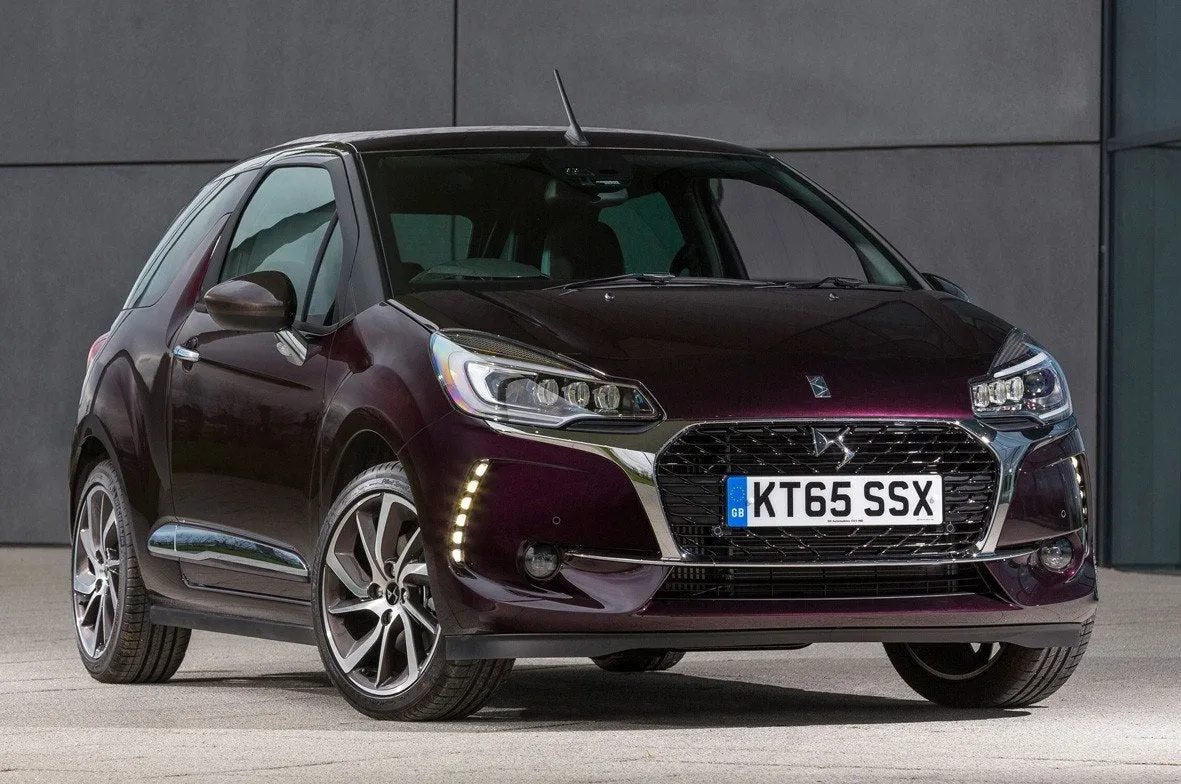
Launched in 2013 as the Citroen DS 3 Cabrio, the car became known as the DS 3 Cabrio when Citroen and DS Automobiles went their separate ways. Updated styling, an enhanced cabin and improved technology gave the impression this was more than just a facelift. Let's learn more about this model in our DS 3 Cabrio review.
The DS 3 Cabrio is a car for the young and young at heart. Trim levels with names like Givenchy Le Makeup, DStyle by Benefit and Chic leave you in little doubt as to who this car is aimed at.
Not that the DS 3 Cabrio is all show and no go. When powered by the excellent 1.6-litre turbocharged engine, the DS 3 Cabrio can give many hot hatchbacks a run for their money, especially in Racing, Performance or Performance Black guises. Looking good has rarely felt more exhilarating, certainly at this end of the market.
The styling has aged as well as any other car from the past decade, with the electric folding roof doing little to harm the aesthetics. Because the roof is far less complicated than other complex folding mechanisms, it adds just 25kg to the car’s overall weight, which means fuel economy and driving dynamics are largely unaffected.
There are three basic configurations: fully retracted, partly retracted and closed. It takes 16 seconds to go from closed to open – or back again – with the roof operable at speeds of up to 70mph. This makes it ideal in countries where you’re never more than a few minutes away from a downpour.
Unfortunately, with the roof open, rearward visibility is virtually non-existent, but the problems don’t stop there. Although the luggage capacity is reasonable for a car of this size and type, access to the boot is restricted by a narrow opening. You may have to put your suitcases on the rear seats.
At least your suitcases won’t complain about the amount of space in the rear. Any adults forced to spend too long back there will complain about the amount of headroom and legroom, especially if those in the front have their seats in the rearmost position.
With production over, now is the time to bag a great deal on a DS 3 Cabrio. It might not be the last word in practicality, and it might be better to describe it as a DS 3 hatchback with a long sunroof, but there’s much to like about this car.
It looks great, boasts a premium cabin that’s loaded with neat details, and there are literally millions of different configurations. You should have little trouble finding a DS 3 Cabrio that’s right for you.
If you're looking for the different version, you can check out our DS 3 review.
Is the DS 3 Cabrio right for you?
If the DS 3 Cabrio could talk, it would end every sentence with ‘darling’ and spend its weekends hobnobbing with socialites at garden parties and regattas. It’s a car for fashion-conscious motorists who put form ahead of function and want to make a statement in a very vanilla world.
The electric canvas roof opens in 16 seconds at speeds up to 70mph, while the three million – yes, THREE MILLION – personalisation options mean you’re unlikely to see a DS 3 Cabrio similar to yours on the way to the gym. These things matter, darling.
It’s also very well built, feeling more German than French, with a range of engines that provide a terrific blend of performance and economy. Whether you opt for the Citroen or DS Automobiles version, you’ll enjoy one of the most convincing and best-looking cars of the last decade.
What’s the best DS 3 Cabrio model/engine to choose?
The Citroen DS 3 Cabrio was available with a range of petrol and diesel engines, including an excellent THP 155 unit. This 1.6-litre turbocharged petrol engine produces 156PS and is closely related to the unit found in the contemporary Mini Cooper S, giving it a proper turn of pace.
If you’re on a budget, the entry-level 1.2-litre three-cylinder petrol (badged VTi 82) offers excellent economy, but runs out of puff on a long run. This makes the 1.6-litre non-turbocharged petrol engine (VTi 120) the best compromise in the Citroen.
The non-Citroen DS 3 Cabrio launched with a range of engines, including a blistering 210PS version of the 1.6-litre petrol unit. Our choice would be the 1.2-litre PureTech 130 petrol engine, although the 1.6-litre BlueHDi diesel offers excellent economy and low CO2 emissions.
It’s easy to make a case for all of the engines on the DS 3 Cabrio, but we’d avoid the frustrating EAT6 automatic transmission. We’d also favour the six-speed manual gearbox over the five-speed unit.
What other cars are similar to the DS 3 Cabrio?
The most obvious rival to the DS 3 Cabrio is the Fiat 500C, which offers a similar electric folding roof configuration, albeit in a smaller package. We’d also argue that the DS 3 Cabrio faces a dance-off against the MINI Convertible, although the MINI has the advantage – or possibly disadvantage – of a proper retractable roof.
Beyond that, you’re looking at cars like the Audi A3 Cabriolet, BMW 2 Series Convertible and even the Mazda MX-5. When you consider the way the DS 3 Cabrio straddles many topless segments, it begins to mount a compelling case.
Comfort and design: DS 3 Cabrio interior
"A few eyebrows were raised when Citroen moved upmarket with DS – initially as a badge, later as a standalone brand – but the DS 3 hatchback and DS 3 Cabrio were quick to quiet the doubters."
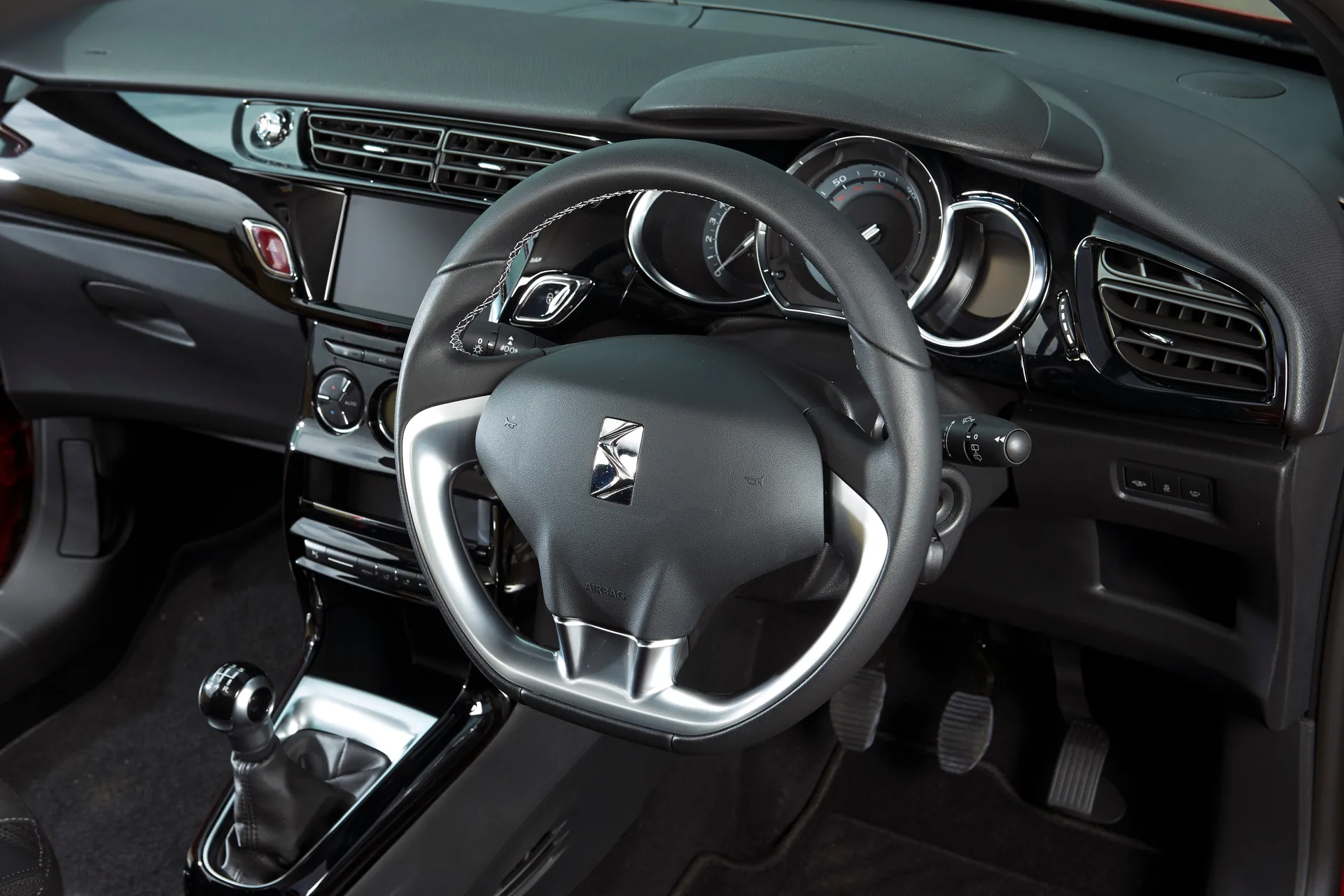
The DS 3 Cabrio gets the basics right, from chic exterior styling to a bespoke feeling cabin, which combine to create more than a passable impression of a premium car. Make no mistake, the DS 3 Cabrio feels a cut above anything modern with a Citroen badge.
Central to its appeal is the range of personalisations available when new. At the time of its launch, few cars offered such a bewildering range of cosmetic options – speccing a DS 3 Cabrio was a process more akin to shopping for clothes in a high-end boutique.
Restricting yourself to the colour of the body was so last year, darling. Gear lever, fabric roof, door mirrors, dashboard, even the key – you name it, you could colour it. Seats could be finished in cloth, Alcantara or leather, while alloy wheels could be sized and styled in a number of different ways.
Of course, you’re unable to personalise a used DS 3 Cabrio, so take your time to explore the various configurations before settling on a spec that’s right for you.
The seats deliver an excellent blend of comfort and support, and although the dashboard design is showing its age, there are enough neat details and soft-touch materials to counterbalance the dated architecture.
Quality and finish
The original Citroen DS 3 Cabrio always felt like a triumph of good packaging and marketing. While perceived quality was high, it didn’t take much in the way of detective work to find where cost savings had been made. There was a marked uplift in quality when DS Automobiles split from the mother brand, with the DS 3 Cabrio feeling more premium and bespoke. Although it was effectively a facelift of an existing model, it felt all-new.
Even the entry-level DS 3 Cabrio 3 boasts mood lighting, satin chrome door sill protectors, a tungsten dashboard strip, a leather steering wheel, soft-touch dashboard trim and a gloss black gear knob. Predictably, many buyers opted to upgrade to a higher trim level or take their pick from the myriad of options and accessories.
Headlights combining three jewel-like LED modules and xenon bulbs are standard on top trim levels, while sequential LED indicators should ensure you’re not ‘out-poshed’ by the Audi alongside you at the traffic lights.
The dashboard was also revised as part of the DS Automobiles rebrand, with fewer buttons and a simpler layout combining to create an uncluttered and more upmarket feel. Feeling brave? The Givenchy Le Makeup boasts a rose pink dashboard strip and various… ahem, cosmetic upgrades.
Infotainment: Touchscreen, USB, nav and stereo in the DS 3 Cabrio
Post-facelift cars come with a standard-fit 7.0-inch colour infotainment screen providing access to navigation, the audio system and telephone connectivity. Crucially, all post-2016 cars also feature mirror screen functionality that works with your smartphone. This includes Apple CarPlay and Android Auto connectivity.
Many of the car’s main functions were added to the touchscreen, resulting in 20 fewer buttons on the centre console. The tech upgrade also included access to the MyDS smartphone app, which is another reason we’d recommend a DS version over the Citroen.
At launch, all Citroen DS 3 Cabrio models came with a radio and CD player (remember them?), steering wheel-mounted controls and six speakers. You had to upgrade to a higher trim level for Bluetooth connectivity and a USB socket, Citroen’s integrated satellite navigation system, eMyWay, featured a 7.0-inch colour screen and was available as an option.
In truth, you might end up tying yourself in knots trying to understand the various trim levels and options that were offered prior to the conscious uncoupling of Citroen and DS Automobiles. Our advice: buy a post-facelift DS version if you can.
Space and practicality: DS 3 Cabrio boot space
At its launch, Citroen made a big song and dance about the DS 3 Cabrio being ‘the only genuine five-seater in its class’. We’d take this claim with a pinch of salt because the rear seats are best suited to children and occasional use.
You wouldn’t want to spend too long in the middle seat while clambering into the back is made all the more difficult by the fact that the DS 3 Cabrio has just two doors. There’s more space up front, thankfully, with plenty of headroom for the driver and passenger even with the roof up.
Speaking of which, the roof can be operated at speeds of up to 70mph, which is handy if you’re caught in a shower on a motorway. Opening and closing take 16 seconds, but you can partially open the roof like a large sunroof. In fact, we’d argue that the DS 3 Cabrio is best described as a DS 3 hatchback with a canvas sunroof – it’s like an old 2CV in this respect.
When it comes to the boot, the DS 3 Cabrio is a bit of a mixed bag. On the plus side, by offering 245 litres of luggage capacity, it trumps the MINI Convertible and Fiat 500C. It also features a trick opening mechanism, with the boot lid using an upwards motion to provide access to the back. However, this is where the positives end, because the entry to the boot is so small, you’ll have trouble fitting a suitcase in the back. Try posting a Big Mac through a letterbox if you’re after a real-world demonstration.
If you happen to have the roof folded back when you want to access the boot, you’ll have to wait a few seconds for it to partly close before you can start loading. No big deal, but these things can frustrate over a period of time. Oh, and with the roof folded back, there’s virtually zero rearward visibility.
The DS 3 Cabrio also loses points for having a tiny glovebox, no cupholders and little in the way of oddment stowage in the cabin. A case of function following form? We think so.
The DS 3 Cabrio dimensions are 3948mm long, 1715mm wide and 1482mm tall.
Handling and ride quality: What is the DS 3 Cabrio like to drive?
"There are plus sides associated with the DS 3 Cabrio’s roof. Because the structure of the car remains largely intact, the DS 3 Cabrio is every bit as good to drive as the hatchback. There’s no complex roof mechanism in the back, so the DS 3 Cabrio is just 25kg podgier, too."
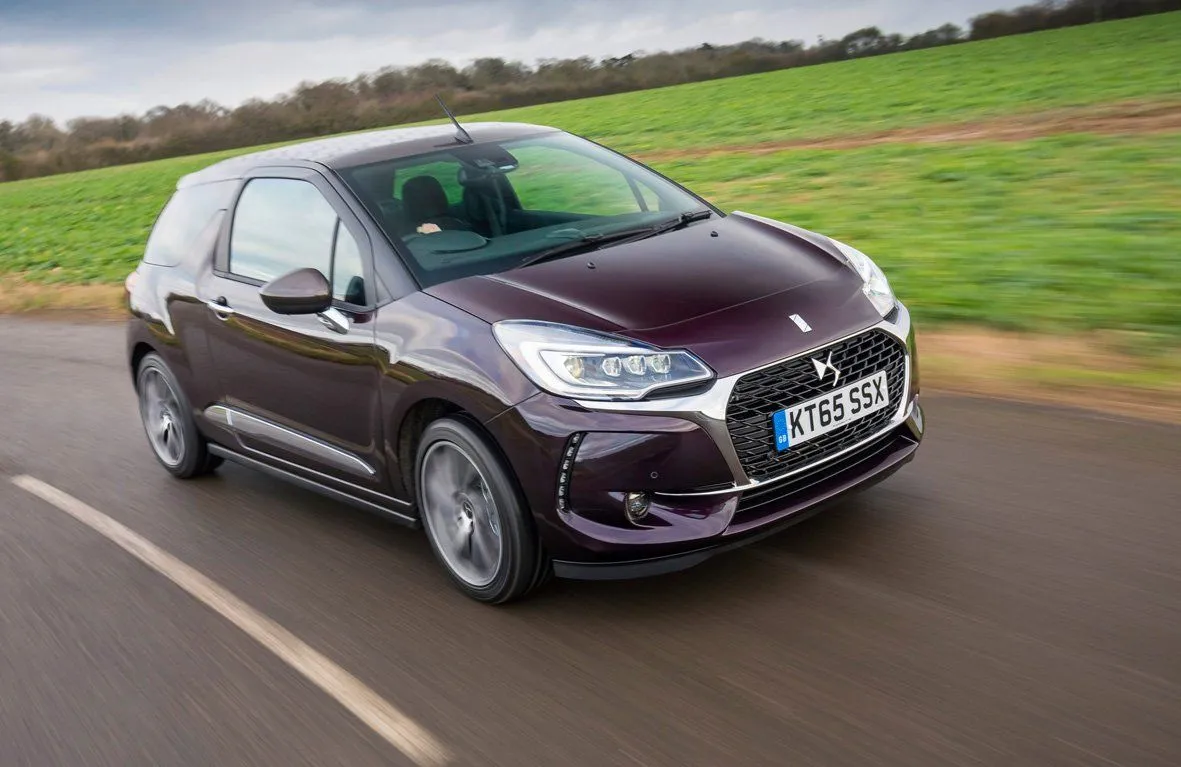
Sure, the DS 3 Cabrio doesn’t feel quite as tight to the drive as the hatchback, but that’s a consequence of taking a tin opener to the roof. It’s also worth noting that the gap between tin-top and topless is nowhere near as wide in the DS 3 Cabrio as in other vehicles.
Is it as fun to drive as the MINI Convertible? Not quite, but once again, there’s not a massive difference between the two. It’s easy to forget that Citroen pitched the DS 3 as a direct rival to the MINI, giving the car similar driving characteristics and a plethora of personalisation options. But while the MINI is overtly retro, the DS 3 majors on contemporary cool.
Chuck the DS 3 Cabrio through a series of bends and you’ll revel in the barrel-load of grip, communicative steering and the near absence of body-roll. With the 1.6-litre turbocharged engine and a six-speed manual gearbox, the DS 3 Cabrio feels every inch a hot hatchback, albeit one with less roof.
The one compromise is ride quality, which is a little on the firm side. As a result, it can feel uncomfortable to travel along broken road surfaces, especially if your car is riding on 17- or 18-inch alloy wheels. The 16-inch rims might offer less bling, but your spine will thank you for choosing them.
A quick note about the DS 3 Cabrio Racing. Launched in 2014, only 100 examples were sold worldwide, with each one boasting more power and torque, along with a host of mechanical upgrades. Highlights include high-performance suspension, a modified sports exhaust, a wider front and rear track, modified steering and uprated brakes.
What engines and gearboxes are available in the DS 3 Cabrio?
The Citroen DS 3 Cabrio launched with three petrol engines and one diesel. The three-cylinder VTi 82 and four-cylinder VTi 120 are hamstrung by a five-speed gearbox, which makes the turbocharged THP 155 the engine of choice for keen drivers.
It’s similar to the engine found in the contemporary MINI Cooper S and Peugeot RCZ, lending it performance car levels of poke. The 0-62mph dash is polished off in 8.2 seconds, before the DS 3 Cabrio maxes out at 132mph. Later, the THP 155 unit was replaced by THP 165 and THP 210 versions, with the 0-62mph time dropping to 7.6 seconds and 6.5 seconds respectively. Meanwhile, the old e-HDi 90 diesel engine was replaced by BlueHDi 100 and BlueHDi 120 versions.
Of the two, we’d recommend the 120 version, not only for its superior performance, but also because it’s paired with a six-speed gearbox, whereas the 100 engine made do with five cogs.
The THP 155 was dropped towards the end of the DS 3 Cabrio’s life, leaving three PureTech engines, the THP 165 and a pair of diesels. All are worth a look, but we’d avoid any engine with a five-speed gearbox or the frustrating EAT6 automatic transmission. If you’re fortunate enough to find a DS 3 Cabrio Racing, you’ll discover a remapped 1.6-litre THP engine with enough power to propel the car to 62mph in 6.5 seconds, before hitting a top speed of 145mph.
For a mainstream alternative, it’s worth considering the Performance and Performance Black editions. Power is sourced from a THP 208 engine, with upgrades including a limited-slip differential, sports suspension, a wider track, large-bore sports exhaust and Brembo brakes.
Refinement and noise levels
With the roof closed, the DS 3 Cabrio feels every bit as refined as the hatchback. The insulated roof cushions you from the outside world, leaving you feeling safely cocooned inside your chic hatchback.
There are two settings for the folding roof. Press the button once and it retracts to the length of the car, leaving you with a kind of extended sunroof configuration. The crucial thing here is that the rear window remains visible, so there’s no impact on rearward visibility.
Press the button a second time and the roof extends further, giving you maximum access to the open air. Either way, there’s little in the way of wind noise to ruin the experience, not least because a wind deflector pops up as soon as the roof starts to open.
It’s certainly quieter than a proper convertible, although you could rightly point out that a proper convertible delivers a superior wind-in-your-hair experience.
Safety equipment: How safe is the DS 3 Cabrio?
The DS 3 hatchback achieved a five-star safety rating when it was crash-tested by Euro NCAP in 2009. It scored 87% for adult occupant protection, 71% for child occupant protection, 35% for pedestrian safety and 83% for safety assist technologies.
In 2017, the DS version of the DS 3 was tested again, when it was given a three-star rating. The scores dropped to 69% for adult occupant protection, 37% for child occupant protection and 29% for safety assist technologies. Pedestrian safety improved, with the DS 3 achieving a score of 55%.
The DS 3 is no less safe today than it was in 2009, it’s just that Euro NCAP has changed the way it tests cars. It’s also harder to achieve a maximum score so many years on, with greater emphasis placed on driver assistance technologies.
Although the DS 3 Cabrio wasn’t tested by Euro NCAP, we’d expect it to achieve near-identical scores. Active city brake, which slows the car automatically if an imminent collision is detected, was added to the DS 3 Cabrio as part of the 2016 facelift/rebadging, but the car is lacking the driver assistance systems we take for granted in 2020. Rear parking sensors have been standard throughout the car’s life, along with driver, passenger, front lateral and curtain airbags.
Front parking sensors and a rear-view camera were added to the range as part of the facelift, although they were never standard equipment.
MPG and fuel costs: What does a DS 3 Cabrio cost to run?
"Predictably, the BlueHDi diesel engines offer the best fuel economy, although the figures are based on the less representative NEDC test, rather than the latest, and more realistic, WLTP cycle. On paper, the BlueHDi 100 could deliver up to 80.7mpg, with the BlueHDi 120 offering a claimed 78.5mpg."
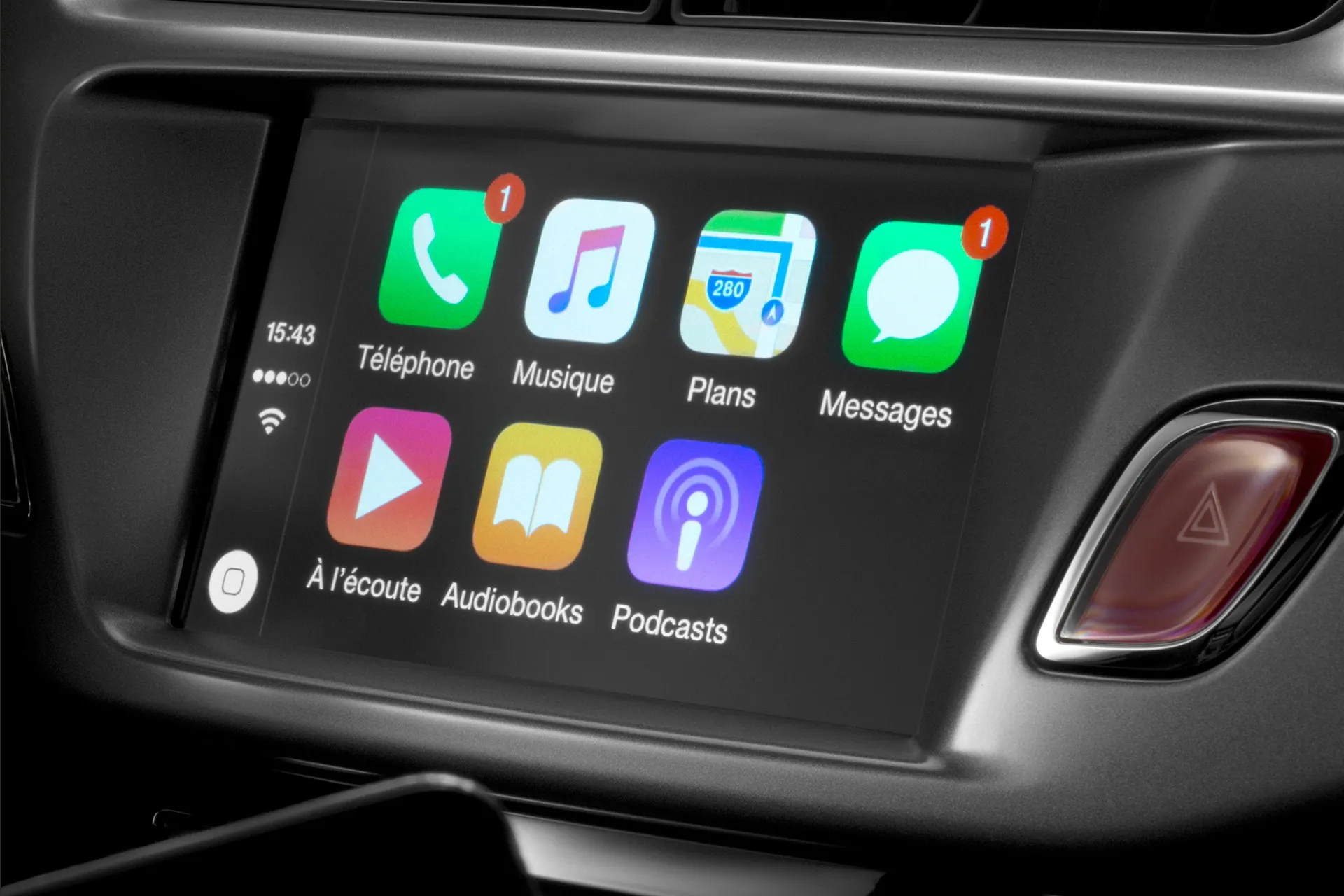
Claimed figures for the PureTech petrol engines range from 57.6mpg to 65.7mpg depending on the output and transmission, while the THP 165 offers a respectable 50.4mpg.
According to Honest John Real MPG figures, the BlueHDi engine should deliver 56.5mpg, while the THP 165 is capable of 38.2mpg in the real world.
How reliable is a DS 3 Cabrio?
The DS 3 Cabrio scored a very respectable 9.43 out of 10 for reliability in the HonestJohn.co.uk Satisfaction Survey, which should provide some reassurance should you decide to take the plunge. Owners have reported some issues with front suspension and engine timing chains, so as always we would suggest going for a car with a full dealer service history.
As a brand DS is too small to feature on its own, but parent Citroen finished a lowly 25th out of 30 manufacturers.
Insurance groups and costs
Citroen DS 3 Cabrio insurance groups range from 12 to 29 for the standard versions, with the Racing slotting into group 39. The groups are almost identical for the DS 3 Cabrio, although the Performance and Performance Black versions fall into group 39, meaning they will be more expensive to insure.
The insurance groups for the DS 3 hatchback are slightly lower, so the cost of getting cover should be reduced. Meanwhile, the latest MINI Convertible falls into groups 16 to 33, so insurance will cost significantly more.
VED car tax: What is the annual road tax on a DS 3 Cabrio?
The rate of Vehicle Excise Duty (VED, or road tax) varies according to the engine and year of manufacture. We’ll provide a few examples.
An early Citroen DS 3 Cabrio with the e-HDi 90 engine will cost nothing to tax because CO2 emissions of 95g/km put it into the lowest band. The least efficient VTi 120 automatic costs £165 a year. For a late DS 3 Cabrio registered on or after 1 April 2017, you’ll be charged £165 a year too.
How much should you be paying for a used DS 3 Cabrio?
"If you can live without the ‘posh’ DS Automobiles badge, Citroen DS 3 Cabrio prices start from around £3,000. This is enough to secure an early 2013 car with a relatively high mileage. The most you’ll have to pay for a Citroen version is £8,000."
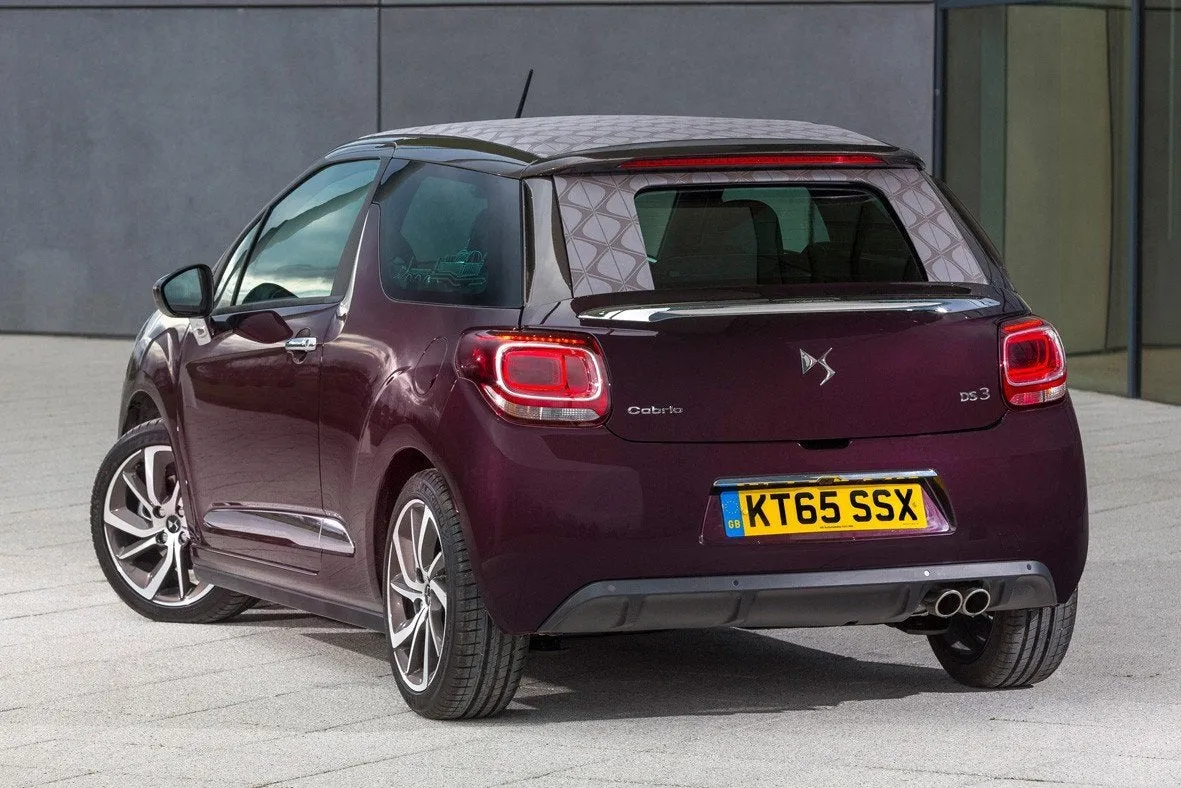
Alternatively, you’ll need at least £8,000 for a post-2016 DS 3 Cabrio. These cars will be much fresher and will tend to have anything up to 50,000 miles on the clock.
The very latest cars command prices of between £10,000 and £12,000, depending on the spec. When you consider that these convertibles cost in the region of £20,000 to £25,000 when new, that’s a lot of car for your money.
Trim levels and standard equipment
DSign, DSire, DStyle, DStyle Plus, DStyle Nav, DStyle by Benefit, DSport, DSport Plus, Racing, Chic, Connected Chic, Performance Line, Performance Black, Prestige, Ultra Prestige, Givenchy Le Makeup and Elegance... deciphering the various trim levels requires patience and time.
This is before you’ve explored various packs, personalisation options and accessories. Make no mistake, Citroen and DS haven’t made the buying process easy for you.
Our advice would be to familiarise yourself with the myriad of configurations available before creating a list of must-haves. Once this is complete, you’ll find it easier to find a DS 3 Cabrio that’s right for you. The chances are, somebody created a car that’s pretty close to your ideal spec. In all cases, the DS 3 Cabrio left the factory with a decent level of standard equipment, especially if you opt for a post-facelift car.
Ask the heycar experts: common questions
Is there a Citroen convertible?
Is the Citroen DSS a turbo?
What does DS 3 stand for with Citroen?
Get our latest advice, news and offers
Keep me updated by email with the latest advice, news and offers from heycar.
By submitting you agree to our privacy policy
